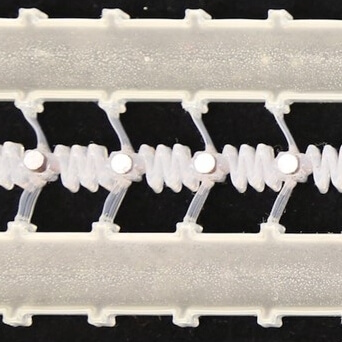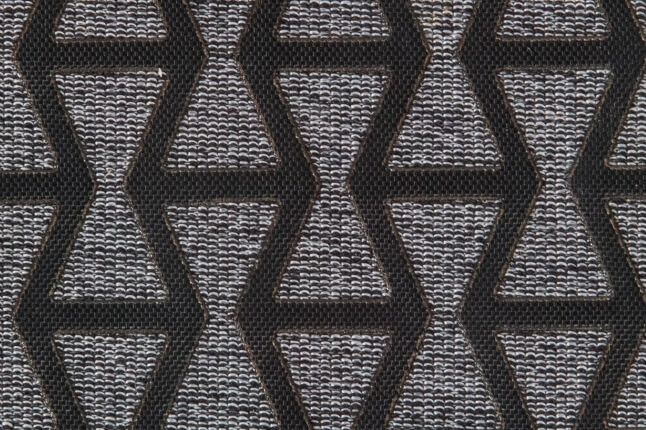News
Bistable beams — structures stable in two distinct state — store and release elastic energy to send a wave of information through soft materials. (Image courtesy of the Bertoldi Lab/Harvard SEAS)
Soft materials are great at damping energy — that’s why rubber tires are so good at absorbing the shock of bumps and potholes. But if researchers are going to build autonomous soft systems, like soft robots, they’ll need a way to transmit energy through soft materials.
Now, researchers at the Harvard John A. Paulson School of Engineering and Applied Sciences (SEAS), in collaboration with colleagues at the California Institute of Technology, have developed a way to send mechanical signals through soft materials.
The research is described in the Proceedings of the National Academy of Sciences.
“Soft autonomous systems have received a lot of attention because, just like the human body or other biological systems, they can be adaptive and perform delicate movements. However, the highly dissipative nature of soft materials limits or altogether prevents certain functions,” said Jordan Raney, postdoctoral fellow at SEAS and first author of the paper. “By storing energy in the architecture itself we can make up for the energy losses due to dissipation, allowing the propagation of mechanical signals across long distances.”
The system uses the centuries-old concept of bistable beams — structures stable in two distinct state — to store and release elastic energy along the path of a wave. The system consists of a chain of bistable elastomeric beams connected by elastomeric linear springs. When those beams are deformed, they snap and store energy in the form of elastic deformation. As the signal moves down the elastomer, it snaps the beams back into place, releasing the stored energy and sending the signal downstream like a line of dominos. The bistable system prevents the signal from dissipating downstream.
“This design solves two fundamental problems in transmitting information through materials,” said Katia Bertoldi, the John L. Loeb Associate Professor of the Natural Sciences at SEAS and senior author of the paper. “It not only overcomes dissipation, but it also eliminates dispersive effects, so that the signal propagates without distortion. As such, we maintain signal strength and clarity from start to end.”
The beam geometry requires precise fabrication techniques. If the angle or thickness of one beam is off by one degree or millimeter, the whole system fails.
The team used advanced 3D printing techniques to fabricate the system.
"We're developing new materials and printing methods that enable the fabrication of soft materials with programmable bistable elements," said Jennifer A. Lewis, the Hansjorg Wyss Professor of Biologically Inspired Engineering and coauthor of the paper.
The team designed and printed a soft logic gate using this system. The gate, which looks like a tuning fork, can be controlled to act as either as an AND or as an OR gate.
"It’s amazing what you can do using simple beams — a building block that’s been around hundreds of years,” said Bertoldi. “You can do new stuff with a very old, well studied and very simple component."
This research was supported by the National Science Foundation and the Harvard University Materials Research Science and Engineering Center (MRSEC).
Topics: Materials
Cutting-edge science delivered direct to your inbox.
Join the Harvard SEAS mailing list.
Scientist Profiles
Katia Bertoldi
William and Ami Kuan Danoff Professor of Applied Mechanics
Press Contact
Leah Burrows | 617-496-1351 | lburrows@seas.harvard.edu




